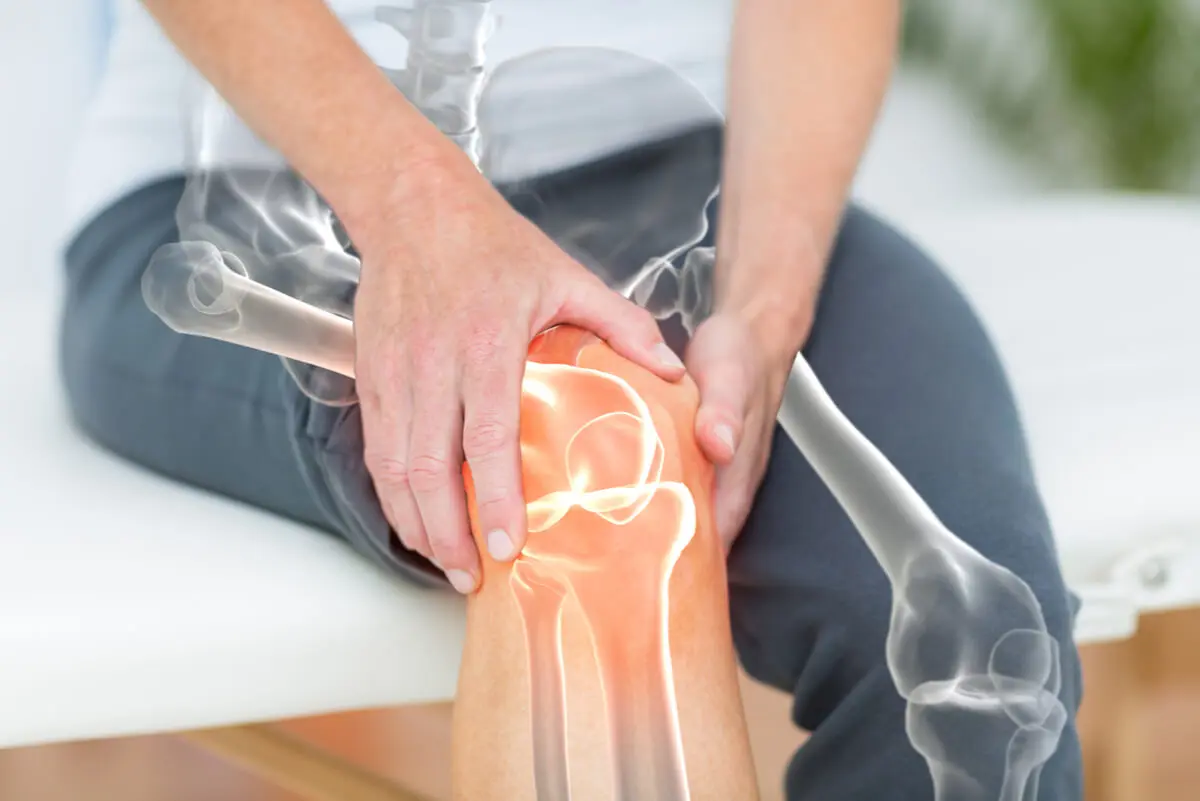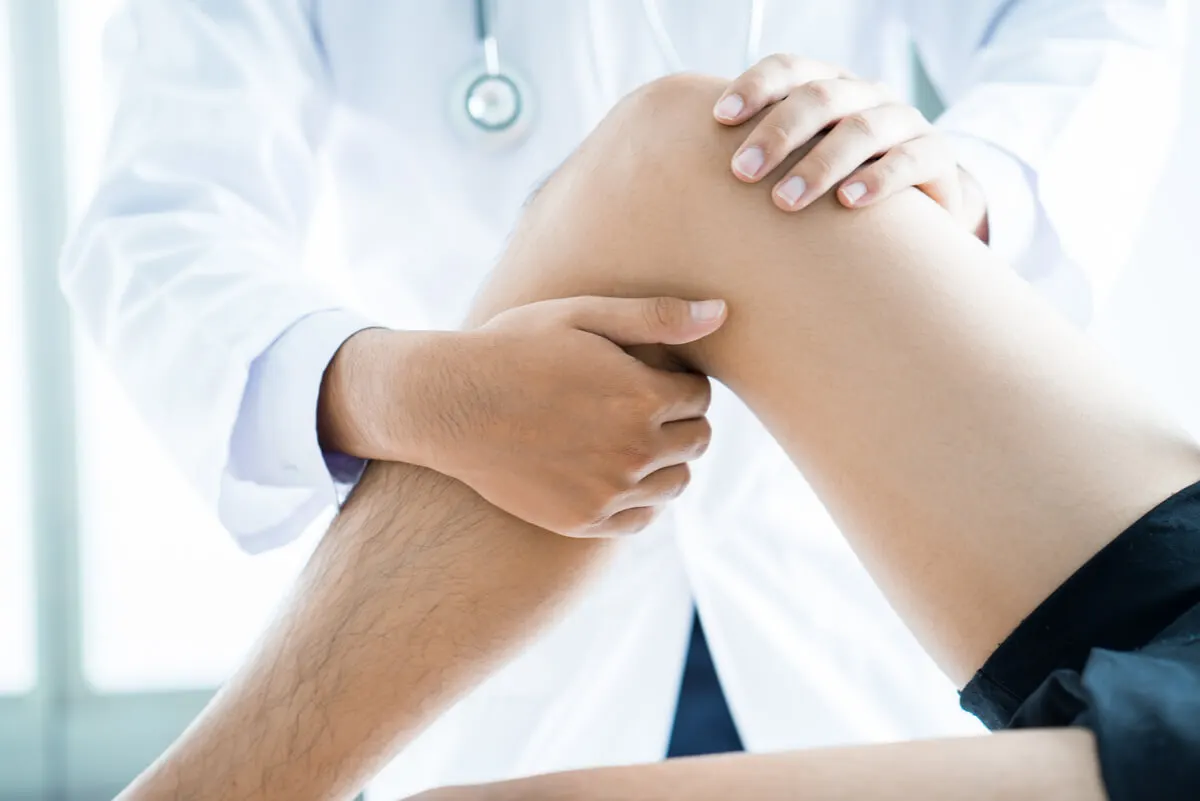Pseudogout: Symptoms, Causes, Diagnosis and Treatment


Written and verified by the biologist Samuel Antonio Sánchez Amador
Pseudogout is a pathology characterized by the appearance of crystals in the synovial fluid, cartilage, fibrocartilage and articular meniscus, among other areas. According to scientific articles, these crystals respond to the calcification (deposition of calcium pyrophosphate) of the hyaline cartilage or articular meniscus, and therefore, it’s also called chondrocalcinosis.
Despite presenting symptoms similar to gout, we’re talking about a disease that has nothing to do with hyperuricemia, that is, with the abnormal concentration of uric acid levels in the blood. That’s why its medical approach and treatment are very different. Here’s everything you need to know about pseudogout.
What is pseudogout?
As mentioned above, pseudogout is a disease caused by an increased concentration and subsequent deposition of calcium pyrophosphate in joint tissues. According to research, these cartilage tissues contain low concentrations of these salts and don’t calcify, so this event has several negative effects on the patient.
According to the same sources, the disease is chronic, with a long duration and slow progression. It’s associated with other pathologies, such as diabetes mellitus and arterial hypertension. Undoubtedly, the one that most correlates with it is osteoarthrosis, the wear and tear of articular cartilage, and subsequent friction between bones.

To learn more: Gout Diet: Recommendations and Prohibitions
What are its symptoms?
Research entities such as the Mayo Clinic define the symptoms of pseudogout or chondrocalcinosis. Some of them are the following:
- Pain, swelling, stiffness and warmth in large joints.
- Frequent crises of joint discomfort that may occur as sudden attacks or as chronic pain sustained over time.
- Localized discomfort in the knees in most cases, although it can also occur in elbows, ankles, wrists, shoulders, and hands.
Gout manifests itself generally in the big toe (in approximately 50% of cases), while pseudogout is mainly concentrated in the knees. This very basic difference is one of the most obvious distinguishing features between the two disorders.
It should be noted that medical associations emphasize that not all people with calcium pyrophosphate deposits in the joints have this symptomatology. Crystals usually appear with age in up to half of the population, starting at age 85. Even so, many never develop symptoms.
Other sources specializing in rheumatology also emphasize that the level of inflammation in pseudogout is usually lower than in normal gout. It is, therefore, considered a slightly less painful pathology.
Causes of pseudogout
Although the mechanisms haven’t been fully elucidated, it’s believed that this disorder is due to the metabolic activity of chondrocytes. These cells of the cartilage tissue can produce more pyrophosphate than normal, which would lead to the formation of crystals in the cartilage matrix. The immune system would attack these atypical structures causing a local inflammatory response.
It should be noted, again, that this pathology has nothing to do with common gout. The latter is due to an excessive amount of uric acid in the blood, either by increased production or deficient elimination in the kidneys. Obesity, unhealthy lifestyles and alcoholism can promote this condition.
In contrast, high calcium intake doesn’t cause pseudogout, as one might think at first. Therefore, no special diets are required in people with pseudogout.
Unfortunately, the cause of the accumulation of these crystals is still unknown. However, it’s suspected that certain genetic predisposing mechanisms may exist.
How is it diagnosed?
The Arthritis Foundation lists a series of steps to follow in order to make an effective diagnosis of this pathology. These are the following:
- A detailed medical history of the patient
- Extraction of a sample of joint fluid to observe pyrophosphate crystals
- X-rays, which show the presence of crystals in the cartilage tissue
- Blood tests to rule out other pathologies, such as gout
What is the treatment?
According to the American Society for Surgery of the Hand, the treatment of gout and pseudogout should be multidisciplinary, that is, we should approach the disease from different fronts. These are as follows:
- First of all, non-steroidal anti-inflammatory drugs (NSAIDs) will be prescribed to treat the pain and swelling of the affected joint. Colchicine and various corticosteroids may also be prescribed. This would be the pharmacological approach.
- Secondly, drainage of the cartilaginous fluid for the removal of the deposited pyrophosphate crystals may also be chosen. This method is called “joint aspiration”. If the articular bones are badly damaged, joint repair or replacement surgery is performed. This is the surgical approach.
- Finally, certain treatments and behavior that don’t involve direct medication are recommended to the patient. This includes the application of ice periodically to the affected area as well as beneficial exercises and joint rest. This is the physiotherapeutic approach.

You may be interested in: Do You Suffer from Gout? Avoid These 7 Foods
Suspecting pseudogout
As we have seen, pseudogout is a pathology that originates in the deposition of calcium pyrophosphate crystals. This event is very common, occurring in up to half of the population over 85 years of age, but not all elderly patients have associated symptoms.
Although it shares certain clinical symptoms and treatment with normal gout, the two pathologies shouldn’t be confused. If you suffer from joint pain in the knee that comes in waves and you’re over 50, then you may be suffering from pseudogout.
All cited sources were thoroughly reviewed by our team to ensure their quality, reliability, currency, and validity. The bibliography of this article was considered reliable and of academic or scientific accuracy.
- Irigoyen Fallas, D., & Rodríguez Sánchez, O. (2012). Pseudogota. Revista Clínica Escuela de Medicina UCR-HSJD Vol. 3 Núm. 3 2012.
- Hernández Martín, A., Puerto Noda, I., & Falcón Hernández, A. (2016). Condrocalcinosis-pseudogota: un subdiagnóstico frecuente. Presentación de un caso y revisión de la literatura. Revista Finlay, 6(1), 59-65.
- Pseudogota, mayoclinic. Recogido a día 6 de septiembre en https://www.mayoclinic.org/es-es/diseases-conditions/pseudogout/symptoms-causes/syc-20376983
- Pseudogota, revista de reumatología del profesor Dr. Jaime F. Bravo. Recogido a 6 de septiembre en http://www.reumatologia-dr-bravo.cl/indexeb91.html?p=207
- Pseudogota (Enfermedad por Deposición de Pirofosfatos de Calcio (EDPC), Arthritis foundation. Recogido a 6 de septiembre en http://espanol.arthritis.org/espanol/disease-center/pseudogota-enfermedad-por-deposicioacuten-de-pirofosfatos-de-calcio-edpc/
- Gota y pseudogota, from the American Society for Surgery of the Hand. Recogido a 6 de septiembre en https://www.assh.org/handcare/condition/gota-y-pseudogota
- Canoso, Juan J. “Enfermedad por depósito de pirofosfato cálcico: 60 pacientes mexicanos.” Anales Médicos de la Asociación Médica del Centro Médico ABC 61.3 (2016): 188-194.
- Gualinga Santamaría, Leonel Santiago. Acercamiento clínico nutricional a trastornos metabólicos de hiperuricemia. BS thesis. 2011.
- Chacon Sanchez, Cristhian Dario. “Indicaciones de estudio del liquido sinovial para el diagnostico diferencial de la monoartritis en pacientes adultos.” (2017).
This text is provided for informational purposes only and does not replace consultation with a professional. If in doubt, consult your specialist.








